The Merino sheep is a very important and popular breed of domestic sheep. It was originated in Spain and it is highly prized for it’s wool.
The modern Merino sheep were domesticated in Australia and New Zealand. Sheep were introduced by the Phoenicians from Asia Minor into North Africa.
And the foundation stocks of the Merino might have been introduced by the Marinids, a tribe of Berbers in Spain as late as the twelve century.
Although there were reports of the breed in the Iberian peninsula before the arrival of the Marinids; perhaps these came from the Merinos or tax collectors of the Kingdom of León, who charged the tenth in wool, beef jerky and cheese.
The Spanish breeders introduced English sheep breeds, which they used and bred with the local sheep breeds for developing the Merino sheep in the thirteenth and fourteenth centuries.
This influence was openly documented by the Spanish writers at the time. Most of the flocks of these animals were owned by nobility or the church. And the flock grazed the southern plains of Spain in winter and the northern highlands in summer.
The Merino sheep is the foundation stock of many well known and modern sheep breeds. And today, they are available in many countries, almost throughout the world.
Why is Merino Sheep Very Popular?
Merino sheep are very popular mainly because of their soft and fine wool. They have special, curly wool fibers that make clothes feel amazing. And clothes made with Merino wool help to keep you warm in winter and cool.
History and Origin
Merino sheep originally come from Spain, where they were highly valued for their luxurious wool. Spanish royalty even guarded them to keep their wool quality top-notch. Some Merinos were taken to other countries in the 18th Century for spreading their woolly goodness. Selective breeding over time has made them even fluffier and softer. Today, this breed is famous throughout the world.
Characteristics
Merino sheep are medium sized animals with very beautiful appearance. They can be either polled or horned. The polled version has no horns, or has a very small stubs, known as scurs.
And the horned version has long and spiral horns, which grow close to the head. Carcass size of these animals is usually smaller than that of the meat sheep breeds.
As a medium sized animal, average live body weight of the mature rams is around 80-105 kg. And the mature ewes on average weight around 55-80 kg.
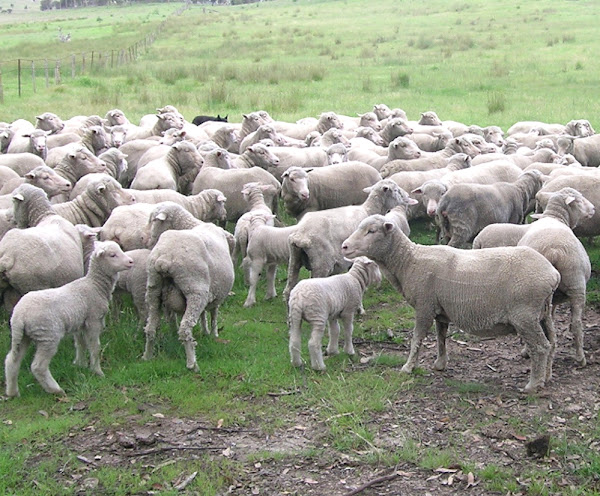
Housing/Shelter Requirements
Merino sheep’s housing requirements are minimal. They will be fine if you can arrange a comfortable and dry place for them, especially during chilly or rainy times. A simple three-sided shelter works well for them.
Main purpose of their house is not only for providing comfort, but also for ensuring security and safety from harsh weather conditions. Make their bedding comfortable by using straw or similar things. Also ensure a good ventilation system, because it is important too.
Dietary Requirements
Feeding Merino sheep with good quality and nutritious food is very important. They generally enjoy munching on grass and hay, which keeps them healthy and happy. Ensure the availability of enough clean and fresh water.
They sometimes require some extra nutrients, like minerals and vitamins. And you can provide them with minerals and vitamins through special sheep feed.
Reproduction/Breeding
These sheep are naturally very good breeders. They will breed easily if you keep a good ratio of male and females in your herd. After successful mating, the ewe becomes pregnant. And after around five months, you can expect kidding.
Behavior/Temperament
Merinos are gentle and friendly sheep with a calm temperament. They enjoy hanging out and feel secure when things are predictable. They are not pushy and they prefer a peaceful environment for living. If they need anything then they may show the emotion by wagging their tails.
However, sudden changes or loud noises can make them a bit nervous. Treating them kindly and providing a comfortable living space keeps these sheep happy.
Lifespan
Average lifespan of Merino sheep can be around 10 to 12 years old.
Cultural Significance
Merino sheep have cultural significance. They are not just sheep, they are symbols of tradition and quality in some places (such as Spain and Australia). Their soft wool has been cherished for centuries.
Popularity and Price
Merino sheep are very popular in many places around the world, mainly because of their amazing wool. Their soft and fine fleece makes cozy clothes. Due to high demand, Merino wool is valued, and that affects the sheep’s price.
However, the exact price of Merino sheep can vary from place to place. For example, the average price is around $500 in the United States, or even more.

Uses
Merino sheep are wool sheep breed. They are raised primarily for wool production. But they are also good for meat production.
Special Notes
The Merino sheep are strong and hardy animals. They are well adapted to almost all climates and they are excellent forager.
They need to be shorn at least once a year because their wool does not stop growing. If the coat is allowed to grow, it can cause heat stress, mobility issues and blindness.
Wool of these animals is of very good quality, and the term ‘merino’ is widely used in the textile industries. Along with wool production, the breed is also pretty good for the production of lean meat.
However, review full breed profile of the Merino sheep in the following chart.
| Breed Name | Merino |
| Other Name | None |
| Breed Purpose | Meat and wool |
| Special Notes | Very hardy and strong animals, well adapted to almost all climates, excellent foragers, need to be shorn at least once a year, wool is of very good quality, pretty good for meat production |
| Breed Size | Medium |
| Weight | Ewes weight around 55-80 kg, and mature ram’s weight can vary from 80 to 105 kg |
| Horns | Yes or polled |
| Climate Tolerance | Native climates |
| Color | White |
| Rarity | Common |
| Country/Place of Origin | Spain |
Some Interesting Facts About Merino Sheep
Here are some interesting facts about this sheep breed:
- Merino sheep have a rich history dating back to the Middle Ages, and they were originated in Spain.
- In Spain, Merino wool was considered so valuable that exporting Merino sheep from Spain was a crime punishable by death.
- These sheep produce some of the softest and finest wool among all sheep breeds. Their fleece is highly valuable for luxurious clothing.
- They have spread worldwide, with significant populations in Australia, New Zealand, South Africa, and the United States.
- They can thrive in various climatic conditions, from the hot Australian outback to the chilly European mountains.
- Selective breeding over centuries has enhanced Merino wool quality. Now their fibers are not only soft but also have excellent crimp, elasticity, and thermal regulation properties.
- These sheep are social animals, and they form close-knit groups.
- They have a calm and gentle temperament. That’s why they are easy to manage and interact with.
- They are very strong and hardy animals. And they can live for 10 to 12 years if you take good care of them.

Frequently Asked Questions (FAQs)
There are many questions people often ask which are related to Merino sheep. Here we are trying to list the common questions about this sheep breed. We hope you will find answers to your questions. Don’t hesitate to ask us if you have more questions.
What is Merino sheep known for?
Merino sheep is known mainly for it’s excellent wool quality.
When the Merino breed developed?
This sheep breed was developed near the beginning of the 12ty Century.
From where the Merino breed originated?
The Merino breed was originated from Spain.
Can Merino sheep live in the US?
Yes, there are some varieties of Merino available which are found in the United States.
Why are Merino sheep the best?
The Merinos are best mainly for their longevity and strong flocking instinct.
Are Merino sheep used for meat?
The Merinos are mainly kept and used for producing high quality wool, but they are also good for producing meat.
Can you eat Merino sheep?
YES, but the Merinos are mainly raised for their very high quality wool.
Why do farmers keep Merino sheep?
For fine quality wool.
Are the Merino breed easy to raise?
YES, the Merinos are very easy to raise. They are very friendly and easy to handle.
What do you feed Merino sheep?
The Merinos are mainly fed on grasses and other similar plants.
Are the Merinos heat tolerant?
YES, they have a high heat tolerance.
What are the disadvantages of Merino wool?
Even though Merino is a fantastic temperature-managing fabric, it tends to be delicate. Much of the ultralight apparel (140 – 180 GSM) is especially weak since it is thin. And, with excessive use and over-washing, holes can sometimes form.
Is Merino wool itchy?
NO! They don’t irritate or itch.
Which country has the most Merinos?
Australia. Australia developed the modern Merino. And Australia has the most advanced wool industry in the world.
Do Merino sheep taste good?
YES, the Merino lam has come out tops in a trial testing the eating quality of sheep breeds.
How many lambs do Merino sheep have?
A female Merino may have 1-3 lambs per kidding.
How much wool does a Merino sheep produce?
A Saxon Merino can produce around 3–6 kg of greasy wool a year.
Do female Merinos have horns?
In most strains of the Merinos, the males have horns while the females are horn- less.
What is the Merino sheep color?
White.
What are the uses of Merino breed of sheep?
The Merinos are mainly raised for their fine wool production. They are also good for producing high quality meat.
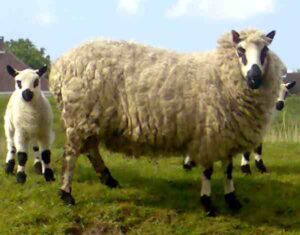

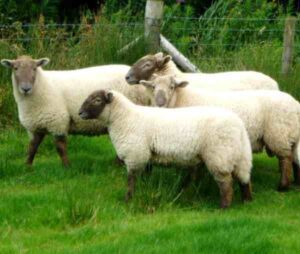

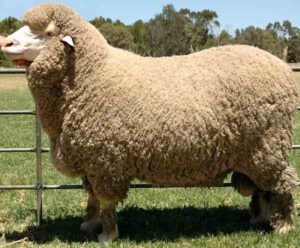
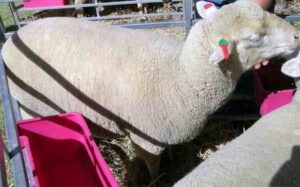
great document! I have been doing research on sheep breeds that would fit my needs on my homestead in the future. I am only 12 years old, but one day I will have my own homestead and have merino sheep, Nubian goats, Idaho Pasture Pigs, a donkey to guard the sheep, different turkey chicken, and guinea breeds, a big Clydesdale, and a big farm mule. thanks for all the great articles.